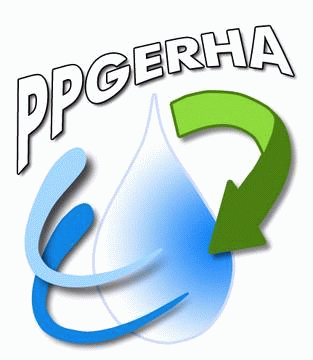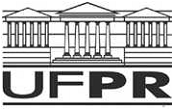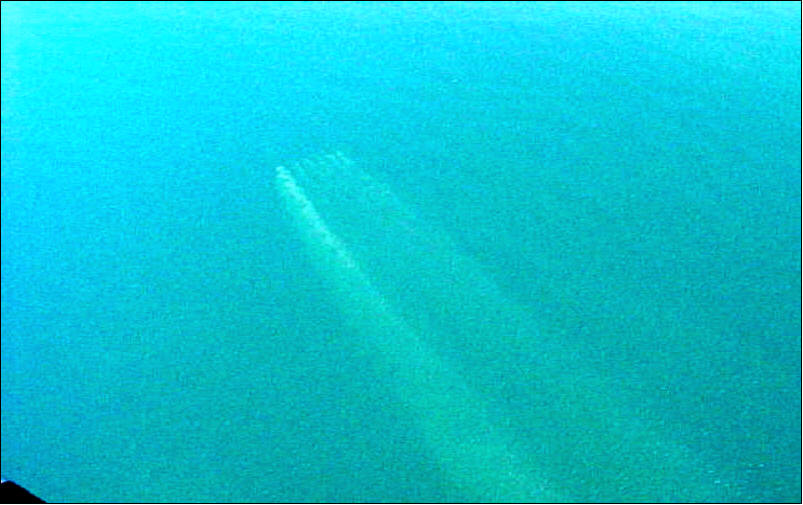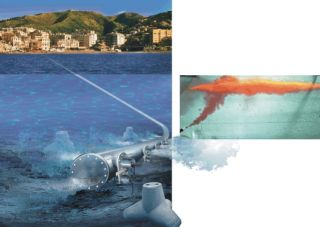Tobias Bleninger
Universidade Federal do Paraná (UFPR)
Setor de Tecnologia, Departamento de Engenharia Ambiental (DEA) Programa de Pós-Graduação em Engenharia Ambiental (PPGEA) Programa de Pós-Graduação em Engenharia de Recursos Hídricos e Ambiental (PPGERHA)
|
 |
Histórico / Past works
-
Projetos anteriores / Previous projects
-
Tese doutorado / Doctoral thesis
-
Dissertação diploma / Diploma thesis
-
Dissertação especializacao1 / Special subject thesis 1
-
Dissertação especializacao2 / Special subject thesis 2
Projetos anteriores / Previous projects
|
Vista do helicoptero: diffusor e pluma de um emiss�rio submarino, Praia Grande, Brasil, 2002 |
|
PDF, ingles: pdf
Title:
"Coupled 3D hydrodynamic models for submarine outfalls: Environmental hydraulic design and control of multiport diffusers
This work was elaborated at the Institute for Hydromechanics of the University of Karlsruhe, Germany with research stays at the University of Sao Paulo (Brazil) and Georgia Tech (USA).
Abstract:
Long submarine outfalls with a multiport diffuser are an efficient discharge device avoiding pollutant accumulation and collapse of ecosystems by dispersing the treated effluents. This thesis describes the results of a project to raise the current level of hydraulic design and environmental impact prediction technologies for such installations. Focus are the hydrodynamic aspects approached by computer modeling techniques. First, a multiport diffuser design program was developed. Secondly, two model systems for discharge analysis, CORMIX for the near-field and intermediate-field and Delft3D for the far-field were coupled, and third a regulatory procedure is proposed to license and monitor outfall installations.
The multiport diffuser design program CorHyd calculates the flow distribution along the diffuser and the related pressure losses in the pipe system. It considers different pipe materials and geometric configurations, and releases restrictions of previous diffuser programs by considering flexible geometry specifications, high risers and variable area orifices, all with automatic definition of loss coefficients. Additional features regarding blocked ports, sensitivity analysis and performance evaluation for varying parameters guarantee proper diffuser operation and reduced costs for installation, operation and maintenance. Case studies show a strong sensitivity to the representation and formulation of local losses even for relatively simple riser/port configurations.
CORMIX was coupled to Delft3D for the prediction of the substance fate, especially for bacteria distributions. CORMIX includes a near-field buoyant jet model for the source induced turbulent mixing and additional modules to consider boundary interaction and buoyant spreading processes in the intermediate-field. Delft3D models the ambient flow hydrodynamics and water quality parameters. The coupling algorithm pays special attention to the intermediate-field modeling, where the CORMIX flow classification system is an important component for the modeling approach. The existing set of length scales as base for the flow classification has been extended by an additional unsteady length and time scale. These ascertain, whether buoyant spreading results as predicted by the steady intermediate-field model correlate with the unsteady motions in the receiving waters. The proposed coupling approach firstly classifies field-data and CORMIX time-series results for the near-field / intermediate-field and computes input and source files for both models according to the chosen far-field grid resolution and intermediate-field plume geometry and concentration. Secondly, the water quality model within Delft3D computes the substance concentrations. The algorithm is implemented and tested for the Cartagena outfall in Colombia. The study incorporated the ocean bathymetry and predicted ocean currents and density distributions through the water column that are generated by wind stresses and the appropriate boundary conditions. Results showed significant improvements compared to traditional design approaches.
Moreover, a proposal for improved water quality regulations and their implementation for discharge permits has been added to the engineering design approach. Especially the specification of where in the water body the environmental quality standards apply and how to predict and monitor has been considered. The proposal of a regulatory discharge zone in combination with a regulatory preservation zone promises to improve procedures regarding discharge licensing and monitoring. Its implementation with support of coupled hydrodynamic and water quality models are demonstrated for the Cartagena outfall.
Diploma tese (Monografia final) / Diploma thesis
PDF, inglês, 1,9 MB: (clique aqui)
Titulo:
"Sedimentation in particle-laden jets"
Este trabalho foi elaborado no Instituto de Hidromecânica da Universidade de Karlsruhe, Alemanha, após os estudos experimentais realizados na Divisão de Hidráulica da Universidade do Porto. Esta é a versão completa, incluindo figuras e diagramas e foi dividida em 3 partes para facilitar o download.Resumo:
Depois do curso de especialização "Environmental Fluid Mechanics", ministrado em inglês pelo professor Jirka do Instituto de Hidromecânica da Universidade de Karlsruhe, foi oferecido un projeto de cooperação com o professor Jorge Neves do departamento de Hidráulica da Universidade de Porto - Portugal, com a possibilidad de elaborar minha tese do diploma.
O projeto incluía a participação num curso da International Association for Hydraulic Research (IAHR) com o tema: "Disposal of effluents in aquatic environment"
Depois do curso trabalhei três semanas com experimentos de sedimentação de partículas em um jato, com o professor Neves.
Minha tese do diploma foi elaborada depois no Instituto de Hidromecânica em Karlsruhe com o professor Jirka, tendo como base os experimentos realizados no Porto. O "abstract" da minha tese (em inglês) eu transcrevi a seguir:
Abstract:
The aim of this work was to develop a first introduction in the discussion of elaborating deposition rate distributions of particles discharged by particle-laden-jets (also called two-phase jets) especially considering a wastewater outfall as the one considered in this application. As a starting point, the flow field of a non-buoyant round jet discharging horizontally in a stagnant environment was considered.
This work is divided into three main parts:
First: All possible physical parameters influencing particle motions in a jet are evaluated in Chapter 2. Some general equations for two-phase flows are presented there.
Second:Two alternative theories are developed by means of dimensional analysis, using also length-scales and an analytical model, respectively, in Chapter 3. The theories are both based on the general simple jet flow characteristics with superimposed particle motions.
Third: The experimental results will be presented and discussed in comparison with the developed theories in Chapter 4.
Summarising the results it is concluded that the sedimentation depends mainly on the parameters of the particle-laden-jet: Diameter of the orifice, discharge velocity, discharge concentration and particle properties, namely diameter and density. Furthermore, it is difficult to give simple summary descriptions for complex particle motions in non-uniform systems, like a turbulent jet. This problem remains when observing the interactions between the particles and the liquid.
In comparison with the experimental results presented in this work, basic definitions for the sedimentation area (the particle deposition rate distribution and concentrations on the ground of the environment) could be determined. There have to be mentioned especially the parameters for determining the starting point of sedimentation and the self-similarity of the longitudinal and transversal deposition rate distributions on the ground.
Resumen:
Después del curso de especialización "Environmental Fluid Mechanics", ministrado en inglés por el profesor Jirka del Instituto de Hidromecánica de la Universidad de Karlsruhe, fue ofrecido un proyecto de cooperación con el profesor Jorge Neves del departamento de Hidráulica de la Universidad de Porto - Portugal, con la posibilidad de elaborar mi tesis de diploma.
El proyecto incluía la participación en un curso de la International Association for Hydraulic Research (IAHR) con el tema: "Disposal of effluents in aquatic environment"
Después del curso trabajé tres semanas con experimentos de sedimentación de partículas en un chorro, con el profesor Neves.
Mi tesis de diploma fue elaborada después en el Instituto de Hidromecánica en Karlsruhe con el profesor Jirka, teniendo como base los experimentos hechos en Porto.
Dissertacao de especialização / Special subject 1
PDF, alemão, 1,0 MB: (clique aqui)
Título:
"Planung und Bau eines Abwassersammlers im Armenviertel Sao Domingos in Curitiba, Brasilien"
(Plenejamento e construção do sistema de águas residuais na Vila Sao Domingos em Curitiba, Brasil)
Este trabalho foi elaborado pela empresa SANEPAR em Curitiba, Brasil e pelo Institute for Aquatic Environmental Engineering da Universidade de Karlsruhe, Alemanha.Resumo:
Este trabalho foi desenvolvido depois de um estágio de cinco meses na empresa SANEPAR em Curitiba, Brasil. Nesta empresa comecei um projeto de planejamento e construção da rede de águas residuais em um bairro pobre, chamado São Domingos. O meu trabalho consisia: nos primeiros estudos, nas medições, nos cálculos hidráulicos e nos cálculos financeiros. Com o Instituto de Engenharia do ambiente aquático da Universidade de Karlsruhe (Professor Hahn), fiz estudos sobre este projeto no ano seguinte, tamb�m em Curitiba. O trabalho tratava sobre diferentes opcões possíveis para planejar e construir a canalização em um bairro pobre e ainda não-legalizado, pois foi ocupado há vinte anos. Eu tinha que seguir todas as normas brasileiras, mas levar em conta também a situação em cada parte do projeto (financiamento, infra-estrutura existente, administração informal, falta de dados, etc.). Depois descrevi a opcão escolhida em todos os detalhes: desde o planejamento até a fase de construção, bem como as possibilidades de financiamento.
Enfim, uma população de aproximadamente 20.000 pessoas morando em 5.000 residências, foi conectada a uma canalização de águas residuais; embora o projeto tivesse sido planejado para começar a realizar-se em dez anos. O projecto finalmente foi financiado pela Caixa Econômica Federal (Brasil).
Zusammenfassung:
Eine Arbeit von dem Beginn der Projektorganisation mit Praktikanten, über die gesamten Planungen und Berechnungen bis zur Ausführung der Konstruktion eines Abwassersammlers. Alles auf der Basis der brasilianischen Normen mit speziellen Konzepten für ein armes, noch illegales Vorstadtviertel, das vor schon 20 Jahren besetzt wurde.
Resumen:
Este trabajo fue desarollado después de una práctica de cinco meses en la empresa SANEPAR en Curitiba, Brasil. En esa empresa comencé un proyecto de planificación y construcción de la red de aguas residuales en un barrio pobre, llamado São Domingos. Mi trabajo consistía en los primeros estudios, las mediciones, los cálculos hidráulicos y los cálculos financieros.
Con el Instituto de Ingeniería del ambiente acuático de la Universidad de Karlsruhe (Profesor Hahn), hice estudios sobre este proyecto el año siguiente, también en Curitiba. El trabajo trataba de las diferentes opciones posibles para planificar y construir la canalización en un barrio pobre y aún no legalizado, pues fue ocupado hace veinte años. Yo tenía que seguir todas las normas brasileñas, pero teniendo en cuenta también la situación en todas las partes del proyecto (financiación, infraestructura existente, administración informal, falta de datos, etc.). Después describí la opción elegida en todos los detalles: desde la planificación hasta la fase de construcción, bien como las posibilidades de financiación.
Finalmente este año, una población de aproximadamente 20.000 personas viviendo en 5.000 residencias, fue conectada a una canalización de aguas residuales; aunque el proyecto había sido planificado para comenzar a realizarse en diez años. El proyecto fue financiado por la Caja de Ahorros de Brasil.
Dissertacao de especialização 2 / Special subject 2
PDF, inglês, 1,1 MB: (clique aqui)
Titulo:
"Agricultural development in Nam Ngum Watershed, Laos"
Este trabalho foi elaborado pelo Instituto de Engenharia Rural da Universidade de Karlsruhe, Alemanha.Resumo:
Este relatório foi elaborado após o seminário "Development of Nam Ngum Watershed, Laos", apoiado, organizado e coordenado pelo Dr.-Ing. W. Klemm e pelo Prof. Dr. D. Prinz do Instituto de Engenharia Rural da Universidade de Karlsruhe, no período de 17 a 21 de maio de 1999.
Quatro grupos trabalharam em 4 temas diferentes a fim de desenvolver um "Watershed Management Plan for the Nam Ngum Watershed of the Lao People's Democratic Republic (Laos)": "The hydropower group, The ecotourism group, The agriculture and irrigation group and The group combining hydropower, ecotourism and agriculture and irrigation".
Eu participei no grupo de agricultura e irrigação. Os resultados de nossa pesquisa, planejamento e informações adicionais foram relatados, interpretados e discutidos neste trabalho.
Após o seminário foram feitas as apresentações e você pode pedir a minha por email.
Resumen:
Este relatorio fue elaborado después del coloquio "Development of Nam Ngum Watershed, Laos", apoyado, organizado y coordinado por el Dr.-Ing. W. Klemm y por el Prof. Dr. D. Prinz del Instituto de Ingeniería Rural de la Universidad de Karlsruhe, entre los días 17 a 21 de mayo de 1999.
Cuatro grupos trabajaron en 4 temas distintos con el fin de desarrollar un "Watershed Management Plan for the Nam Ngum Watershed of the Lao People's Democratic Republic (Laos)": The hydropower group, The ecotourism group, The agriculture and irrigation group and The group combining hydropower, ecotourism and agriculture and irrigation.
Yo participé en el grupo de agricultura e irrigación. Los resultados de nuestra investigaci�n, la planificación y las informaciones adicionales fueron relatados, interpretados y discutidos en este trabajo.
|
Tobias Bleninger � DEA/PPGERHA/PPGEA � UFPR � Centro Polit�cnico, Bloco V, Sala: 9.22 � Caixa Postal 19011 � 81531-990 Curitiba-PR � Mail: � Tel.: 041-33613212 � Cel.: 041-984975685 |
last update: 08.05.18 |


